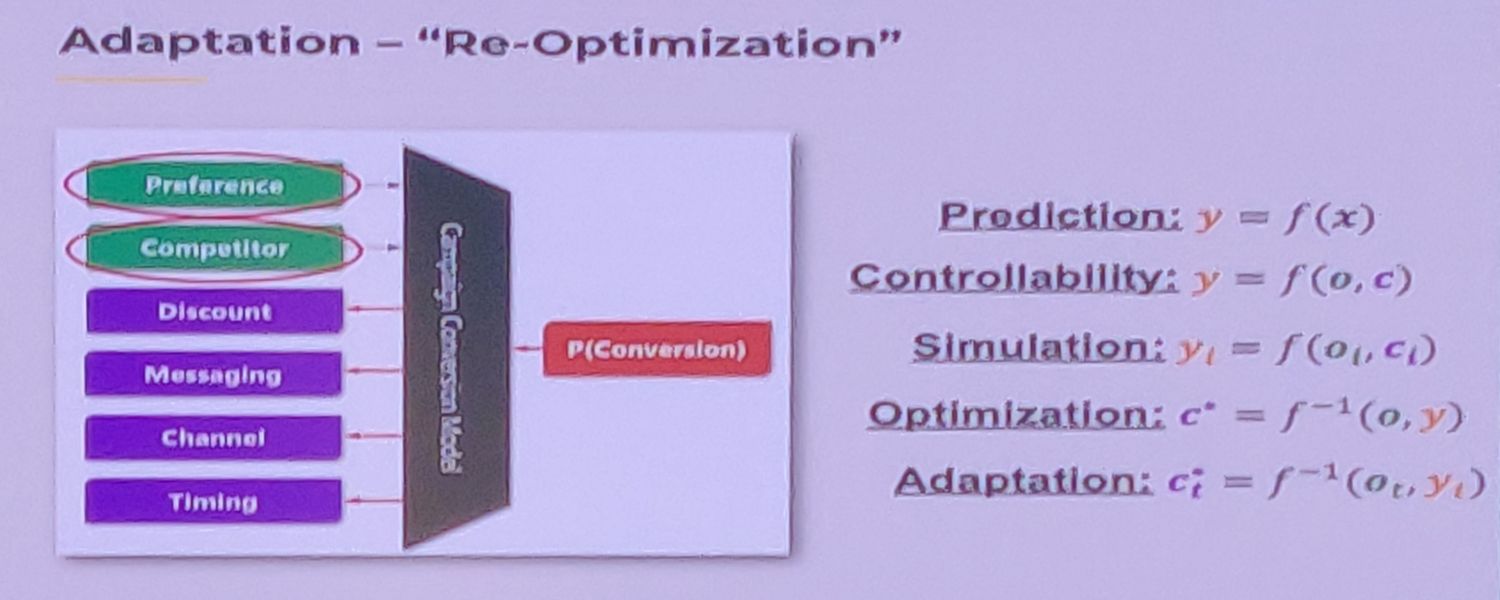The closing keynote at PyCon India 2023 was delivered by Dr. Shailesh Kumar, Chief Data Scientist for AI/ML at Reliance Jio (for our foreign readers, Reliance Jio is a leading telecom company in India). This was a very interesting talk that I want to expand on a bit more in this article.
Note: This article has a lot of pictures, so if you are reading this in your email client, make sure to enable the option to download and display images.
By the way, if you missed our coverage of PyCon India 2023, you can find links to all our live coverage from the event at the link below

Business Workflows and Systems
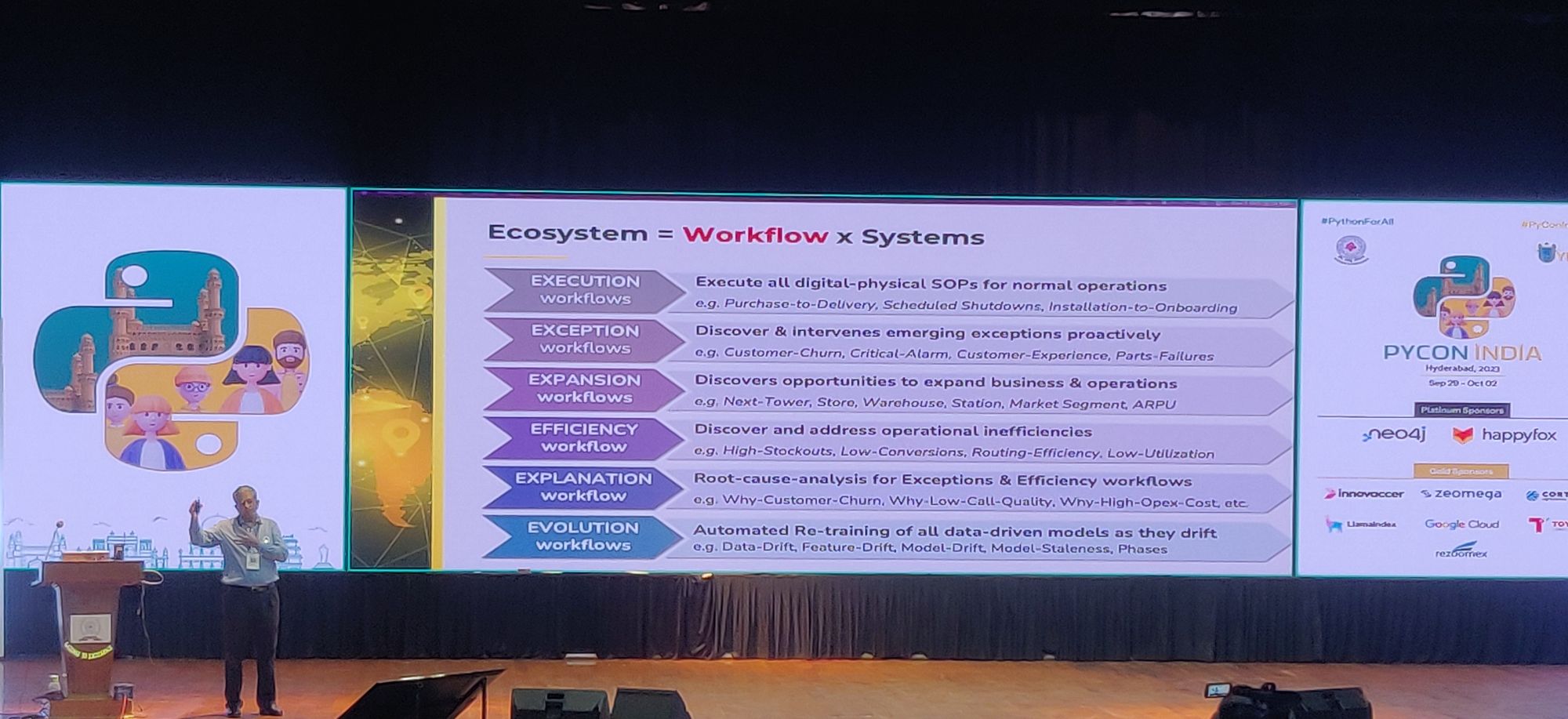
What is an Ecosystem? Dr. Shailesh says an ecosystem is a combination of business workflows and systems. Business workflows are typically of six categories shown in the image above:
- Execution Workflows: These are workflows for executing various business processes, eg: onboarding a new customer
- Exception Workflows: These are workflows for handling situations when something goes wrong
- Expansion Workflows: Workflows for expanding the business to new opportunities
- Efficiency Workflows: Workflows for improving operational efficiency, eg: improving conversion rates of paying customers
- Explanation Workflows: Workflows to identify root causes of certain situations, eg: why do more calls drop at a certain time of the day
- Evolution Workflows: This is a new category specific to AI models related to re-training of models as new data becomes available
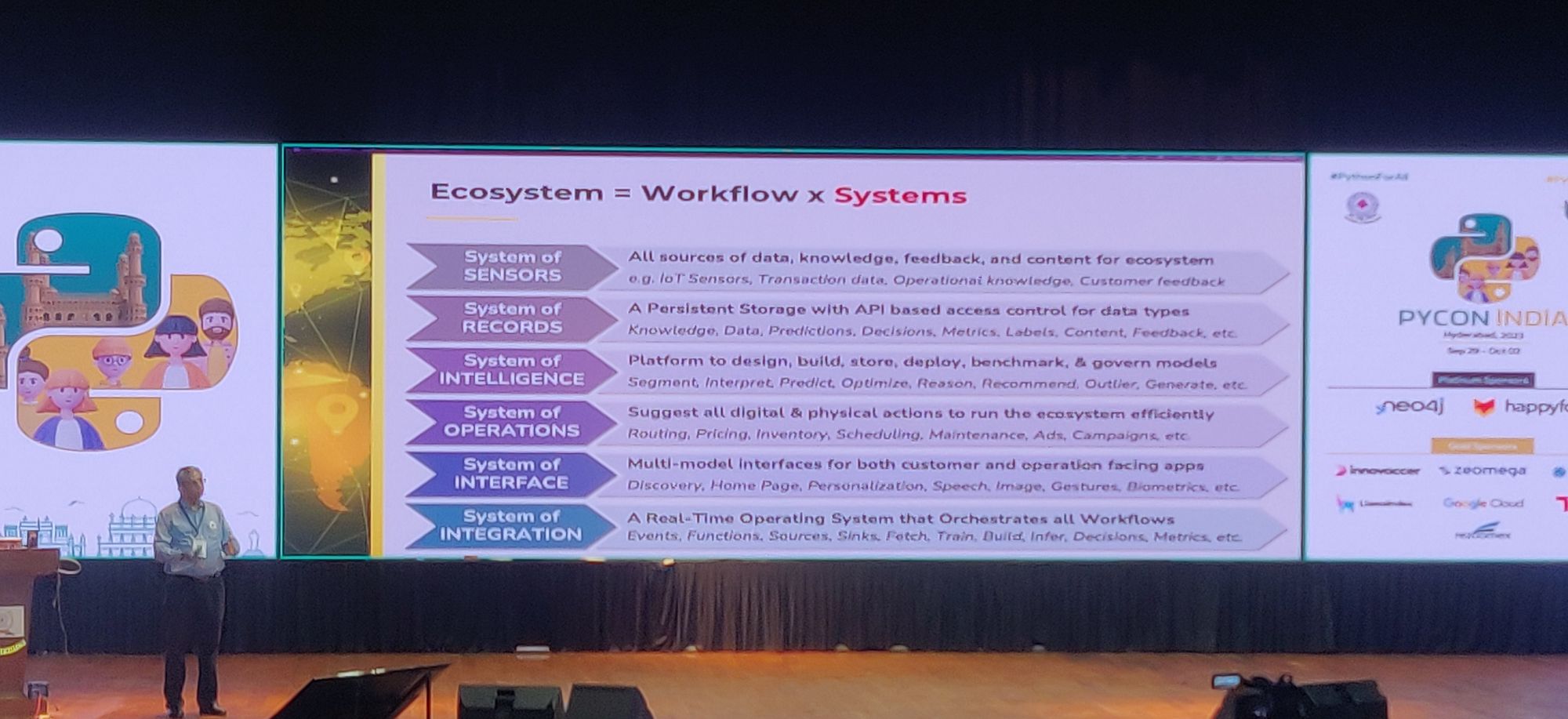
Whereas systems falls into the six categories that are shown in this image:
- Sensors: Sources of data for the ecosystem
- Records: Persistent storage of data
- Intelligence: Platform to design, build and deploy models
- Operations: Run business process applications
- Interface: Applications for customers and business
- Integration: An operating system that orchestrates all workflows
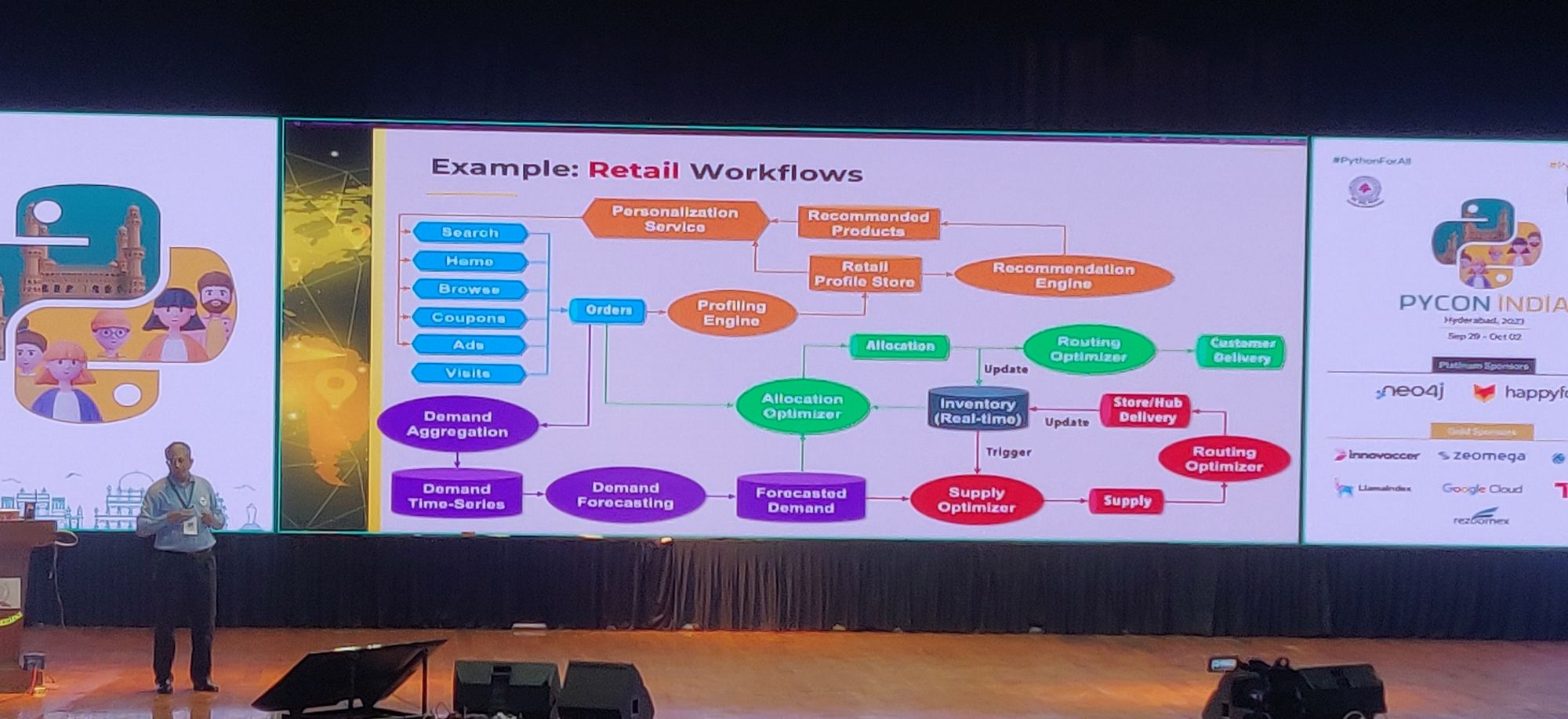
This pictures shows what the integration of all these systems might look like for a retail business. The parts in blue are the customer interfaces. Data generated from here is used in personalisation and recommendation models. Another part of the data (purple) is used in demand forecasting models. The green and red areas are optimiser models that use data to optimise the logistics and supply chain.
Today, although there is a lot of research and new advancements in the field of building and optimising single models, companies have a good idea of how to go about it.
But as we can see, in business ecosystems we do not have single models that work in isolation. Rather, we have multiple models that work and interact with each others in complex ways. Managing this entire system is the next challenge for businesses. In Reliance Jio they call this coordination with the term "AI Operating System."
Deep Causality
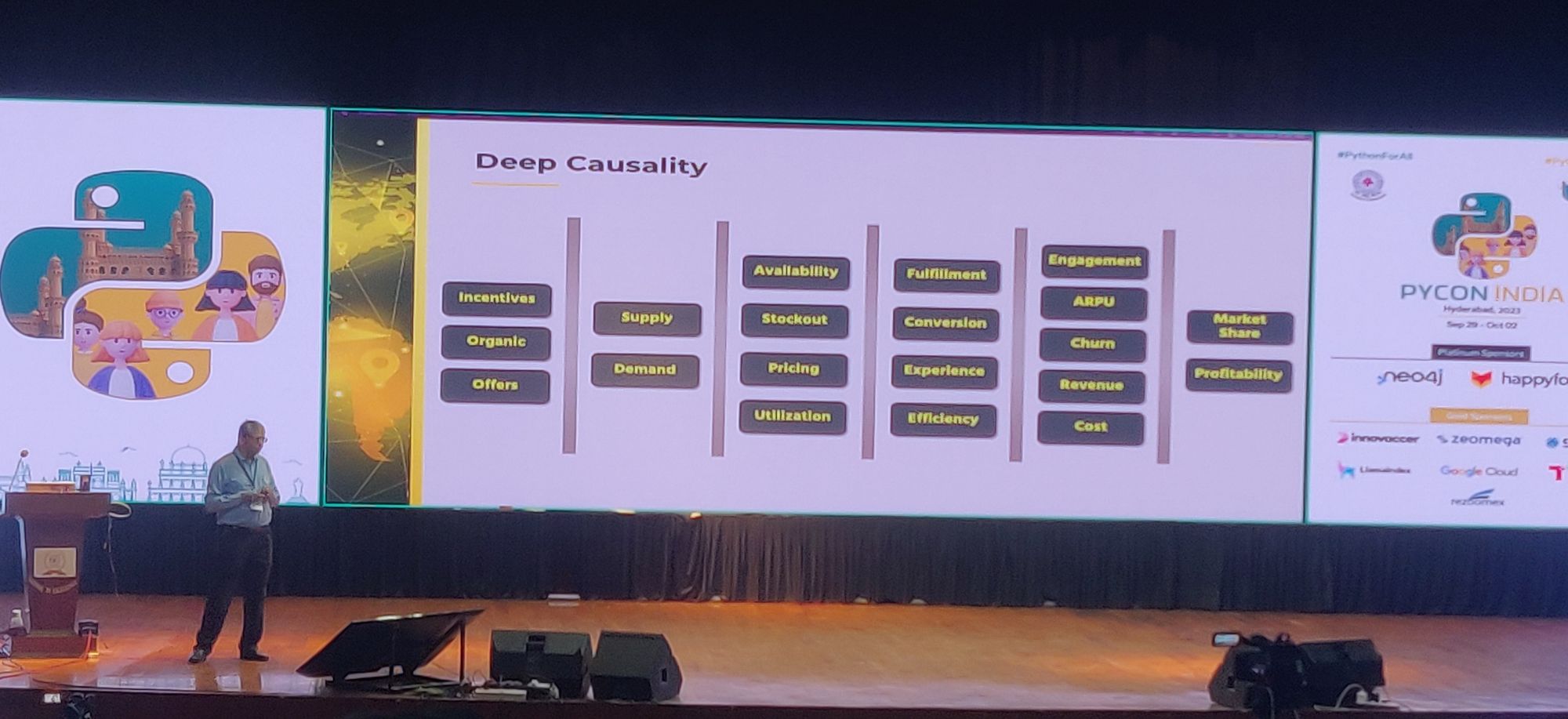
This slide above shows the cause and effect between inputs and outputs in a typical ecosystem. The example here is for a ride hailing application (Uber, Ola etc). The metric on the rightmost column (Market share, profitability) is what the business is ultimately interested in. In order to impact those metrics, the business has to optimise secondary metrics like revenue, churn and cost. Those metrics in turn are impacted by the previous column - conversion rate, customer experience - which in turn are impacted by the previous column. Thus we have a complex system of interdependence where the changes at the source of the system ripple through a chain of causes before impacting on the business outcomes at the end.
Deep Controllability
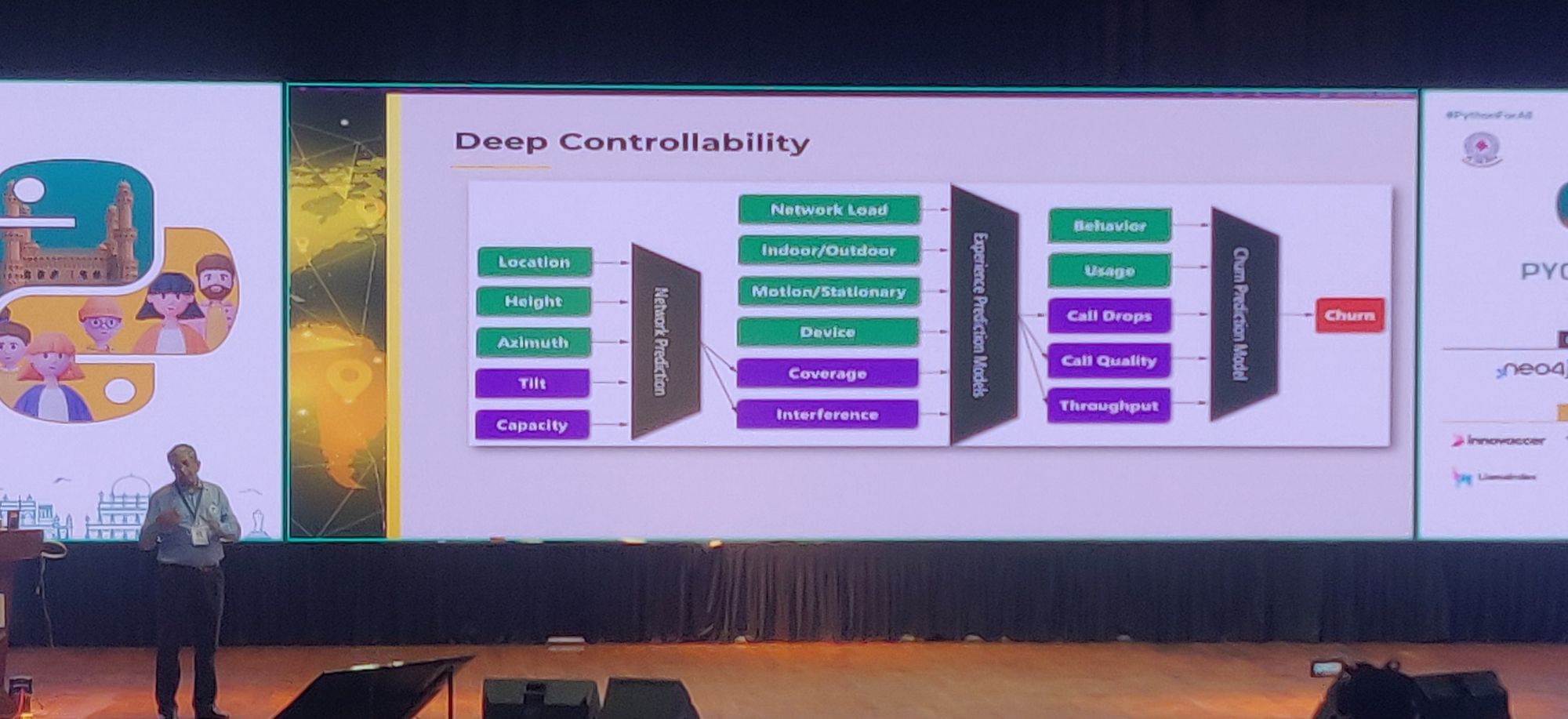
So lets say we want to control churn in a telecom business. Some of the variables that impact churn are call quality and how often there are call drops (Variables that can be easily adjusted are shown in purple, variables that are difficult to change are in green). A "churn prediction model" can take these inputs and predict the impact on churn. Call quality itself is an output of an "experience prediction model" that takes network coverage and signal interference as some of the inputs. And signal interference is in turn influenced by the orientation of towers in the network.
Deep Simulation
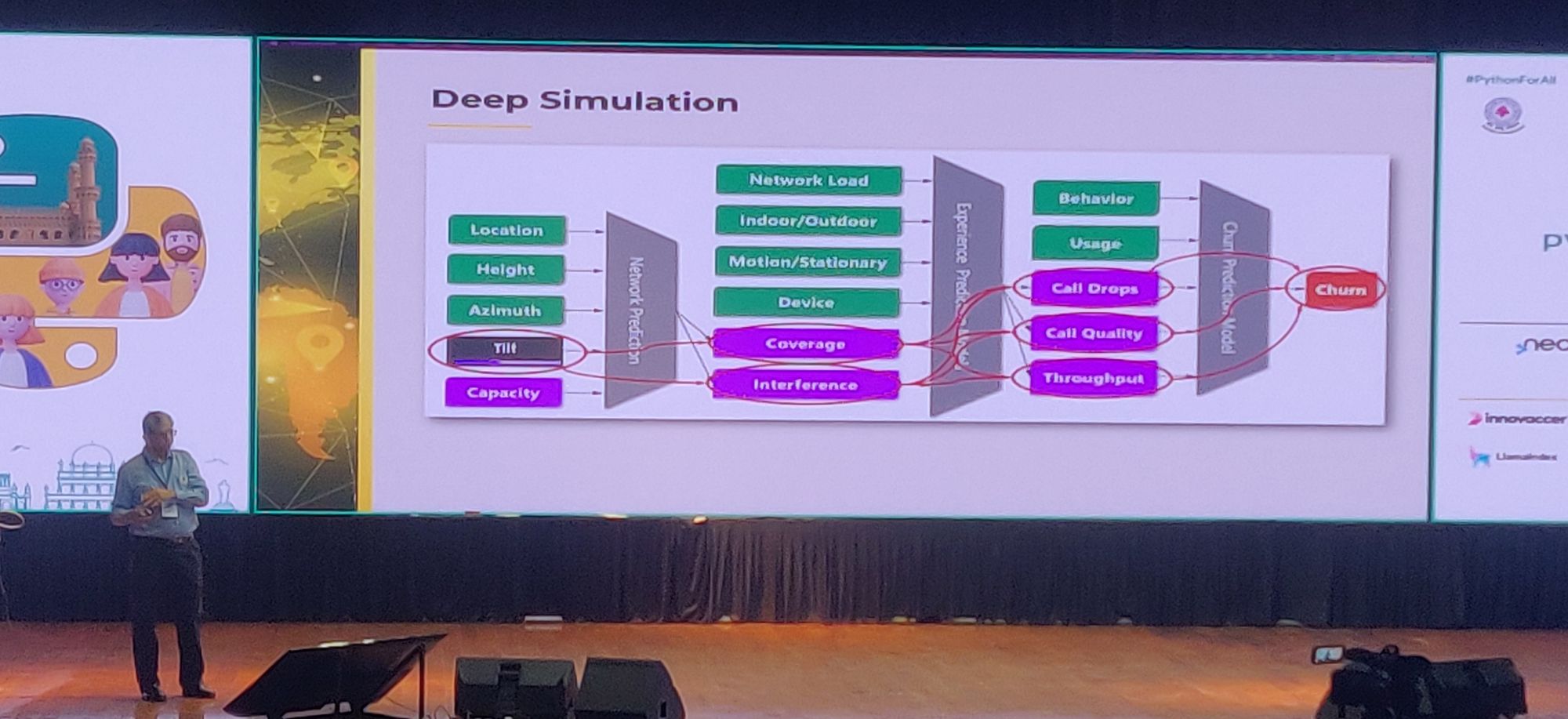
A set of connected models like these allows the business to adjust variables deep in the chain and see what might be the outcome at the business side. For example, if the tilt of the telecom network towers were adjusted, then what would be the impact on network coverage? How will that change in coverage impact call quality? And how will that change the expected churn metrics on the business? Finally, how will reducing churn like this impact market share or profitability?
Adaptation
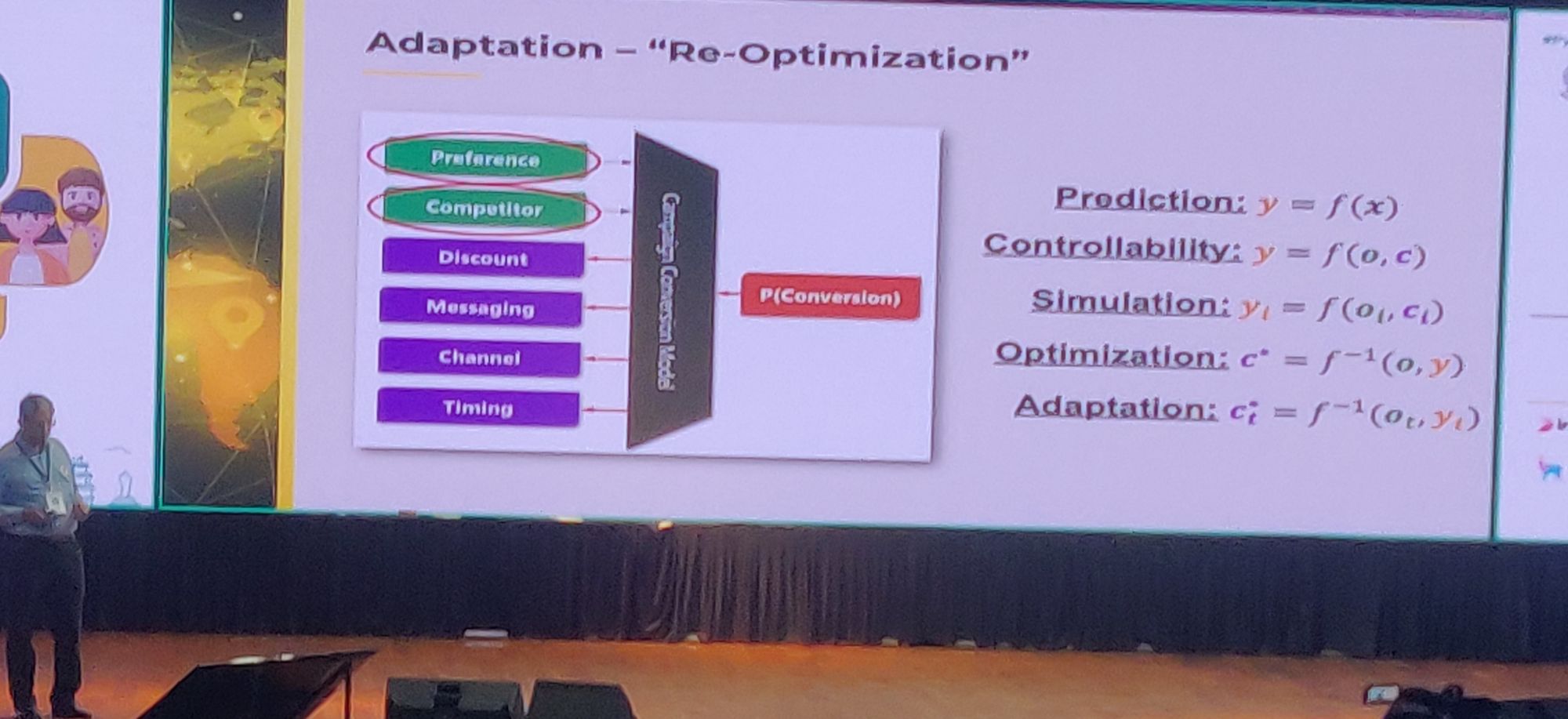
Simulation via the models also allows the business to understand the impact of changes in the green variables. Remember, these variables are mostly out of the hands of the business. For example, in the marketing conversion model shown above, there will be changes to customer preferences over time. There will also be changes to competitor behaviour. Models can be used to understand how these changes will impact on the business, and how the other variables need to be adjusted in order to compensate accordingly.
AI Systems
Attempts to create a "model-driven" business have been attempted many times in the past using traditional statistical modeling and simulation. However the number of variables involved has been a constraint in developing accurate models that can be relied upon. With the latest advancements in AI, and the ability to collect the required data to train them, we are finally at a point where we can develop reliable models for each of the workflows and systems in a business and interconnect them to deliver successful business outcomes. This is the next challenge for businesses and the area where most of the research in Reliance Jio is focused upon.
Did you like this article?
If you liked this article, consider subscribing to this site. Subscribing is free.
Why subscribe? Here are three reasons:
- You will get every new article as an email in your inbox, so you never miss an article
- You will be able to comment on all the posts, ask questions, etc
- Once in a while, I will be posting conference talk slides, longer form articles (such as this one), and other content as subscriber-only
